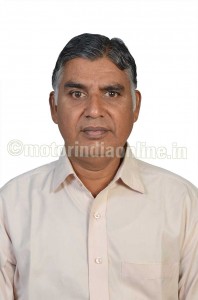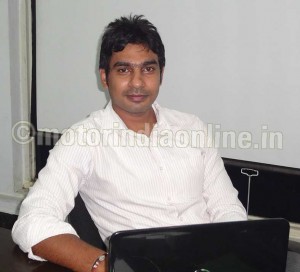By RACE Innovations
The Indian commercial vehicle segment is going through a paradigm shift and regulatory changes in terms of technology related to comfort, safety, reliability, emission standards, etc. We can see a significant impact in chassis engineering, drive line technology, electronics, brake system, cab engineering, bodies and emerging newer applications. Of course, the challenge is going to be the aftermarket service support, network, service infrastructure and skilled manpower. With the above changes it is also critical to understand the impact in terms of service cost to various stake-holders like customers, OEMs and dealers.
While nobody knows what lies ahead, having good insights into the influences on commercial vehicle (CV) maintenance and repair can help organizations better prepare for tomorrow and the inevitable changes that come with it. In “Today’s strategy for Tomorrow’s Commercial Vehicles,” Mr. Jeyagopu – Chief Consultant (Technology), and Mr. Prakash Gopi – AGM (Product Management & Application), RACE Innovations (P) Ltd., explored what to expect from fast evolving commercial vehicle technologies and their impact on future aftermarket requirements.
Regulation change

The last emission regulation change came into force in India on October 1, 2010. A total of 13 cities moved from BS III to BS IV and the rest of the country from BS II to BS III. Moving from BS II to BS III calls for incorporation of an Electronic Diesel Control (EDC) system for the engine. Some manufacturers went in for an EDC in full and a few manufacturers went with EDC as well as mechanical fuel system, with or without DOC (diesel oxidation converters).
In the case of BS III to BS IV, all Indian manufacturers opted for Common Rail Diesel Fuel system (CRDI/CRS), either with SCR (selective catalytic reduction) or EGR (Exhaust gas re-circulation). The market prefers SCR to EGR in view of better fuel saving in spite of the penalty on Adblue (urea solution) expenditure. Also, SCR has proved to be better on reliability and durability than EGR. The next higher emission levels, BS IV and BS V norms, are likely to come into force by 2017, which would create more avenues and opportunities in terms of technology.
Technology infusion
An engine with EDC (BS III) calls for standalone EDC, whereas in the case of CRS with after-treatment devices, it would call for infusion of more electricals and electronics. Apart from this, a number of user requirements like anti-lock braking system (ABS), electronic suspension system, on-board diagnostics (OBD) multiplex wiring systems, automated manual transmission (AMT), gear shift advisory systems, etc., involve more electronics.
In order to appreciate the rate of technology upgrade, an overview of the various systems would help. EDC systems are different for BS III and BS IV applications. The EDC system consists of ECU, sensors, fuses, actuators, software and diagnostic tool. In addition, there is a DC-DC converter wherever 12 and 24V devices are used in the same system (usually when VP fuel systems are employed). In the case of BS IV, the vehicle has to handle after-treatment system (SCR or EGR) also along with electronic engine management system.

Further complexity arises when EEA (Electrical and Electronic Architecture) or Multiplexing systems is mandated, which consists of BCU (Body control unit), ICU (instrument cluster unit), MUX (multiplexing unit), diagnostics, engine, AMT, ABS, electronic suspension systems, infotainment, etc. Various systems are connected to the body control unit (BCU) through separate CAN interfaces. EEA defines the overall electrical and electronics system architecture, including functional portioning. Also, it processes information and reliable delivery of power, signals and data across the architecture. EEA can help in emergency-start-assist in case the regular system fails.
On a conventional vehicle, the instrument cluster is a showpiece which the driver rarely uses while driving. In EEA, the electronic instrument cluster unit plays a large role. The instrument cluster is the source of several important information on vehicle and operating conditions, viz., Driver Interface like Power-on-self-test (POST), LCD Display on Vehicle Information and Diagnostics, Trip fuel economy, Distance to Empty on fuel, Diagnostics Information on Engine, Electrical and Electronics, ABS, Critical information like excessive engine idling, clutch riding, set speed limit, high gear range, exhaust brake on, air pressure low, over speeding, neutral and reverse gear position, gear shift advisory, numerous tell-tale warnings, etc.
Technology absorption
Technology upgrade is inevitable and is driven by legislation (in terms of emission, safety) and user demand (like reliability, durability, faster turnaround, cost benefits). Aftermarket support also pushes technology in terms of maintainability, fault diagnosis and faster vehicle delivery when it comes to the workshop for maintenance/repairs. Whilst legislation and user demand would be incorporated as design intent to a larger extent, the question remains as to what is needed to be done for the aftermarket stake-holders like the user, OEM, dealer network, etc.
An analysis of the aftermarket would bear out that the following important areas need to be addressed,
Human resource & skill development: The changing face of the CV industry also demands mechanics to work in an increasingly technology-driven environment. Gone are the days when sockets and wrenches alone were enough to get the job done in an auto repair shop. Skill development to cope with upgrade in technology and infrastructure to carry out fault diagnostics and rectification is vital to achieve faster turnaround. Electricians and mechanics need to be trained repeatedly. More diploma-level trained personnel need to be added to the workforce to handle new technologies. It is clear that OEMs have to take the first step of mass training of mechanics across the geography, and RACE Innovations, an engineering consulting firm, can support these initiatives in terms of research and training.
Service infrastructure: With BS IV and BS V emission norms on the anvil, along with a host of other technological changes on the vehicle, and assuming product and market mature by that time, the viability of dealers would emerge as a big question since infrastructure and labour costs would become prohibitively high. Higher standards in safety and operational ease are, no doubt, desirable and inevitable, but they come with a price tag. Secondly, manufacturers need to come out with a single robust diagnostic tool to handle existing and new technology, and with scope for upgrades.  The existing dealerships have to upgraded in terms of layout, working environment, diagnostics tools & equipment, etc.
The existing dealerships have to upgraded in terms of layout, working environment, diagnostics tools & equipment, etc.
Cost & economics: It is evident that the customers have to make significant financial investments in the parts, necessary modern facilities, labour, cost per service, specialized and generic tools and up-to-date training that are required to service the OEMs’ full range of products. However, customers can derive some benefits with increasing reliability, durability of the parts & longer service intervals. Also with improving technology OEMs are offering increased warranty for most of their components, which is a positive sign for the customers.
Now let us look at the service scenario with OEMs/dealers. It is obvious dealers have to invest a lot on service technology, diagnostic tool, test bench, training & manpower, environment, etc. This is definitely going to be a challenge for the dealers / OEMs as the Indian customers are very reluctant to pay for the technology. The service dealerships may have to evolve a different model without impacting the profitability of service.
RACE is preparing in terms of positioning itself as primary source of support for users/OEMs/dealers in their pursuit of enhancing the skill levels of manpower, upgrading the current service infrastructure and facilities and also optimizing the possibility of the service workshop.
In the forthcoming section, we bring you a report on the aftersales strategy of leading CV makers in the country.

